Creating a lasting impression on your target market involves having attractive product packaging with a distinct “wow” factor. In that regard, print coating is one of the most critical packaging elements you need to be aware of if you want your packaging to look its best despite multiple individuals touching and handling your products. CrownPackages understands the importance of exceptional packaging, and that’s why we offer a variety of finishing techniques, including aqueous coating (AQ).
Whether used for packaging boxes, calendars, manuals, or other applications, the coating impacts the final look and appeal of the product. While each company has its own set of needs, let’s delve into one of the most popular coatings available: Aqueous (AQ) coating.
What is Aqueous Coating (AQ)?
Unlike UV coating and varnish, AQ coating is water-based and is known as the “default” coating for printing and packaging. It features fast-drying capabilities when used during the printing process, which makes it possible to achieve different appearances, allowing various application methods.
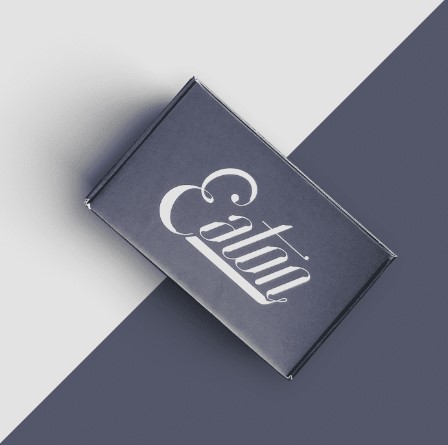
In addition to this versatility, AQ coating is known for being environmentally friendly with its non-toxic, water-based solvent that makes it perfect for applications such as:
- Foods
- Household products
- Fast-moving consumer products
AQ coatings are also resistant to fingerprints and other impurities during handling, and it is also possible to enhance surface durability with a combination of different coat layers. However, the product type will largely determine the suitability of AQ coating for your packaging.
When to Coat with Aqueous Coating?
Regardless of which coating you’re considering, in most cases, it will help protect and enhance your final product. If you intend to mail your piece, a print coating is necessary. And if you predict many hands will handle your print like a business card or brochure, a print coating is highly recommended for its added protection.
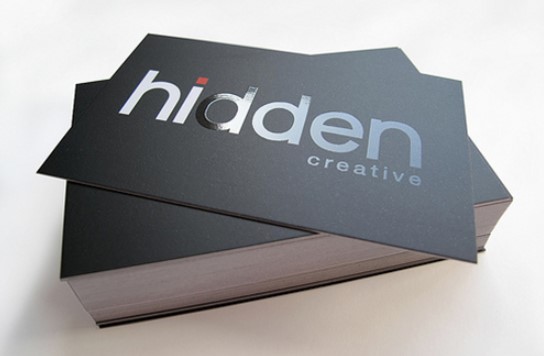
However, sometimes your printed piece might be hindered by a print coating. Greeting cards, for example, do not need a coat, as applying one would make writing on the card challenging, defeating the intended purpose of your greeting cards! Still, if you wish to add a print coating to these items, you must specify with your service provider the areas where a coat should not be applied to avoid this problem.
The Benefits of Aqueous Coating
We’ve briefly mentioned the benefits AQ coating has over the other popular finishing methods, but let’s look at the four main benefits in more detail to understand why so many companies choose this option.
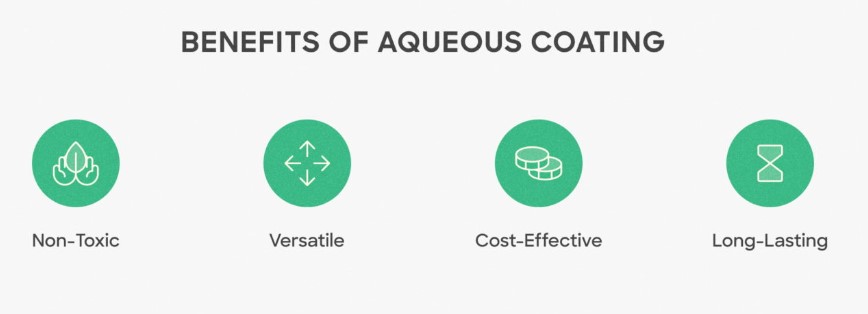
- Non-toxic & Environmentally Friendly: The treated paper is easily recyclable and does not produce harmful by-products. After applying the aqueous coating, there is minimum solid waste, and the cleaning process does not require toxic cleaning agents.
- Versatile: It is a no-hassle solution when additional finishing is necessary to the print and works well with various printing processes. The coating also makes it very easy to write and print over the coating for more variety in finishes.
- Cost-effective: This water-based coating is mainly used in line with the printing process, delivering significant cost savings.
- Durable and Long-lasting: By sealing the ink against exposure to air, the coating maintains the fidelity of metallic inks. Aqueous coating is also less susceptible to yellowing, making it a better alternative to varnish.
Types of AQ Coatings
Aqueous coatings are available in matte, satin, or gloss finishes, but other unique coating types are also available to fit your printing needs! Let’s have a look.
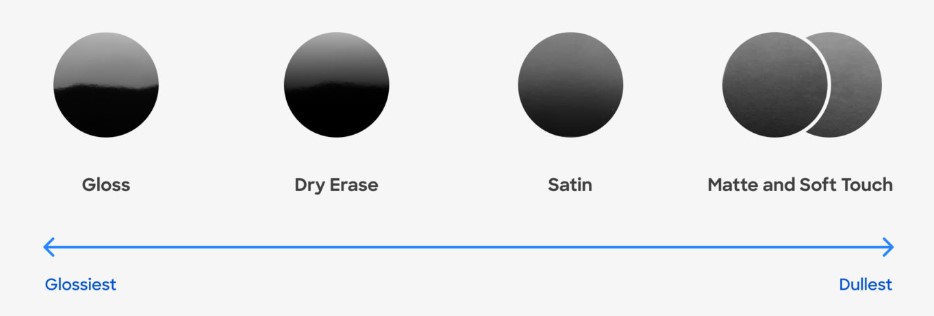
- Gloss: A gloss aqueous coating is ideal if you’re looking for a less showy and more muted finish. UV coating or film laminates are better options if you are looking for a flashier shine.
- Dry Erase: An alternative to laminate, dry-erase AQ coating achieves a high gloss effect at a low price.
- Satin: With an appearance between gloss and matte, a satin aqueous coating offers medium shine and excellent scuff resistance.
- Matte: A matte aqueous coating offers minimal shine and depth but a high degree of color intensity.
- Soft Touch: Soft touch aqueous coating creates a velvety texture with a soft appearance compared to a glossy finish. Similar to matte coating, it gives a subtle finish with little to no shine.
AQ Coating vs. The Alternatives
While AQ coating reigns supreme in many situations, other finishing options exist. Here’s a quick comparison to help you determine the best fit for your needs:
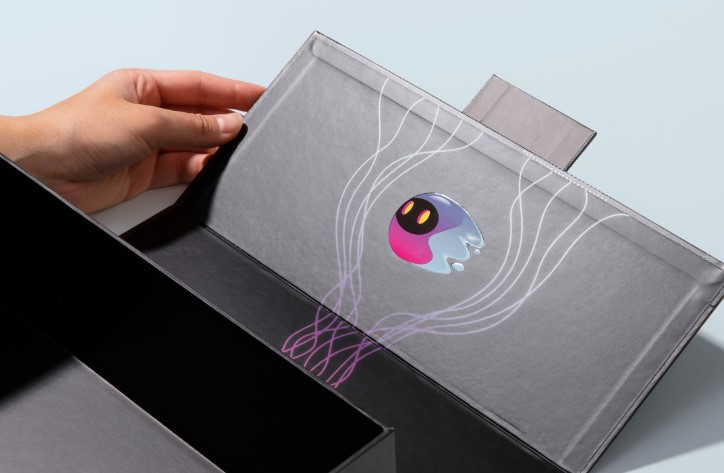
| Feature | Aqueous (AQ) Coating | UV Coating | Varnish |
| Coating Area | Flood coating only | Flood or spot coating | Flood or spot coating |
| Drying Speed | Fast drying | Instant drying | Longest drying time |
| Solution Base | Non-toxic water-based | Chemical-based solvent | Water or chemical-based solvent |
| Yellowing | Less likely to yellow | Does not yellow | Yellowing may occur |
| Finishing | Matte, satin, gloss | Matte, gloss | Matte, satin, gloss |
| Environmental Impact | Environmentally friendly | Less environmentally friendly | Varies |
| Durability | Good protection from scratches | Excellent protection, chemical-resistant | Good protection but may yellow |
| Flexibility | More flexible, less prone to cracking | Can crack when folded or creased | Flexible but may yellow |
The Aqueous Coating Process
Special machines apply the AQ coating immediately before printing ink on the sheets. Special care is taken to ensure no wrap, wrinkles, or curls occur on the paper during this process and after the application of the coating, the sheet passes through a heated air system for quick drying.
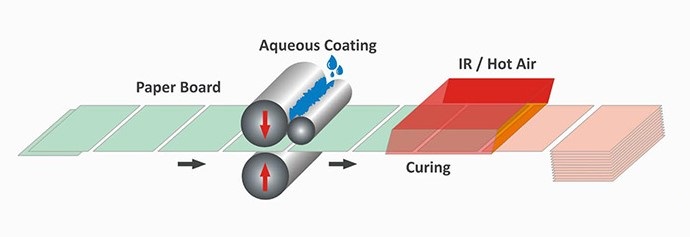
At CrownPackages, we take pride in our meticulous AQ coating process. Here’s a glimpse into what you can expect:
- Expert Application: Our state-of-the-art equipment ensures a smooth, even application of the AQ coating, eliminating imperfections and inconsistencies.
- Rapid Drying: We utilize a precisely controlled drying system to ensure the coating dries quickly and efficiently, minimizing production delays.
- Quality Control: Our team meticulously inspects every coated sheet to guarantee a flawless finish that meets your exacting standards.
Conclusion
Although AQ coating provides several benefits, the chances of chemical burning with aqueous coating and UV coating are higher than other finishes such as varnish. The solvent resistance of the aqueous coating is lower than that of UV coating and thermal lamination. Nevertheless, AQ coating is still the most popular choice for print finish options thanks to its reliable and brilliant results.
Looking to learn more about your coating options for packaging? Contact our product specialists at CrownPackages today and get expert advice on finishing and printing options tailored to your product!
Frequently Asked Questions
What is aqueous coating in printing?
What is the difference between aqueous coating and UV coating?
What types of coating finishes does aqueous coating offer?
1. Aqueous Gloss Finish: Provides a shiny, vibrant look.
2. AQ Matte Finish: Offers a flat, non-reflective appearance.
3. Satin Aqueous Coating: A medium shine between gloss and matte.
4. Dry Erase Finish: Allows the surface to be written on and erased.
5. Pencil Receptive Finish: Suitable for surfaces that need to be written on with a pencil.
6. Soft Touch Finish: Gives a velvety texture and a subtle finish.
7. Primer Coating: Prepares the surface for additional finishes.
